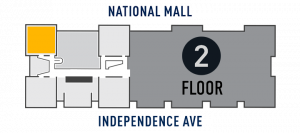The LR91 was the second stage engine for the two-stage Titan I, which was a U.S. Air Force Intercontinental Ballistic Missile (ICBM). Titan I was conceived in 1954 to close the "missile gap" between the U.S. and Soviet Union. Although the Atlas ICBM was already under development, the USAF authorized Titan as a backup.
Developed by Aerojet-General, the LR91-AJ-1 engine produced 80,000 pounds of thrust and had a burn time of 160 seconds. Its propellants were liquid oxygen and RP-1, a type of kerosene. The LR91 featured a turbopump, a regeneratively-cooled thrust chamber assembly, and an asbestos-based ablative skirt. LR91 testing began in 1956.
The first successful flight of Titan I was in 1959 from Cape Canaveral. It became operational in 1962 and was deployed in five U.S. states. Because Titan II was more advanced, Titan I was deactivated in 1965.
The U.S. Air Force transferred this engine to the Smithsonian in 1969.
Display Status
This object is on display in Nation of Speed at the National Air and Space Museum in Washington, DC.

Object Details
Country of Origin
United States of America
Type
PROPULSION-Rocket Engines
Manufacturer
Aerojet General Corp.
Dimensions
Overall: 4ft 8 1/2in. x 4ft 9in. x 5ft 9in. x 2ft 11 1/2in., 4700lb. (143.51 x 144.78 x 175.26 x 90.17cm, 2131.9kg)
Materials
Aluminum, Steel, Fiberglass, Rubber (Silicone), Stainless Steel, Plastic, Paper, Paint, Magnesium, Adhesive
Inventory Number
A19721010000
Credit Line
Transferred from the U.S. Air Force
Data Source
National Air and Space Museum
Restrictions & Rights
Usage conditions apply
For more information, visit the Smithsonians Terms of Use.